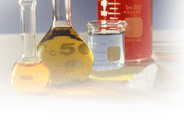|
Bioaxis Chemicals Co.,
Ltd |
|
|||||||
|
|
|
|
||||||
|
|
||||||||
Biocaxis >
Products >
chlorophyllin
Pheophorbide
|
Specification: |
,
Molecular Formula: C₃₅H₃₆N₄O₅ ,
CAS Number: 24533-72-0 (Pheophorbide a) ,
Storage: Stable at -20<C, protected from light. ,
Solubility: Soluble in organic solvents (e.g., DMSO, ethanol) and
aqueous solutions at neutral to alkaline pH. |
|
Application: |
Key
Applications • Photodynamic
Therapy (PDT). • Bioimaging. • Antimicrobial
Research. • Photosynthesis
Studies. |
|
|
|
|
Pheophorbide Specifications ,
Molecular Formula: C₃₅H₃₆N₄O₅ ,
CAS Number: 24533-72-0 (Pheophorbide a) ,
Storage: Stable at -20<C, protected from light. ,
Solubility: Soluble in organic solvents (e.g., DMSO, ethanol) and
aqueous solutions at neutral to alkaline pH. Pheophorbide
is a chlorophyll-derived porphyrin compound formed by the removal of
magnesium and phytol groups from chlorophyll. This chlorin structure gives it
unique photochemical properties, making it a valuable tool in biomedical
research and therapeutic applications. Available as a high-purity powder or
customized formulations, Pheophorbide is widely used for its photosensitizing
capabilities and versatile functionality. Key
Applications ,
Photodynamic Therapy (PDT): Pheophorbide
acts as a potent photosensitizer. Upon light activation, it generates
reactive oxygen species (ROS) to selectively destroy cancer cells or
pathogens. Studies highlight its efficacy in targeting tumors while
minimizing damage to healthy tissues. ,
Bioimaging: Its inherent fluorescence enables non-invasive tracking
of cellular processes, aiding in cancer diagnostics and drug delivery
studies. ,
Antimicrobial Research: Demonstrates activity against
drug-resistant bacteria and fungi under light exposure, offering promise for
treating infections. ,
Photosynthesis Studies: Used to investigate chlorophyll
degradation pathways and plant stress responses. Production
& Quality Safety
& Handling Future
Potential |
|


